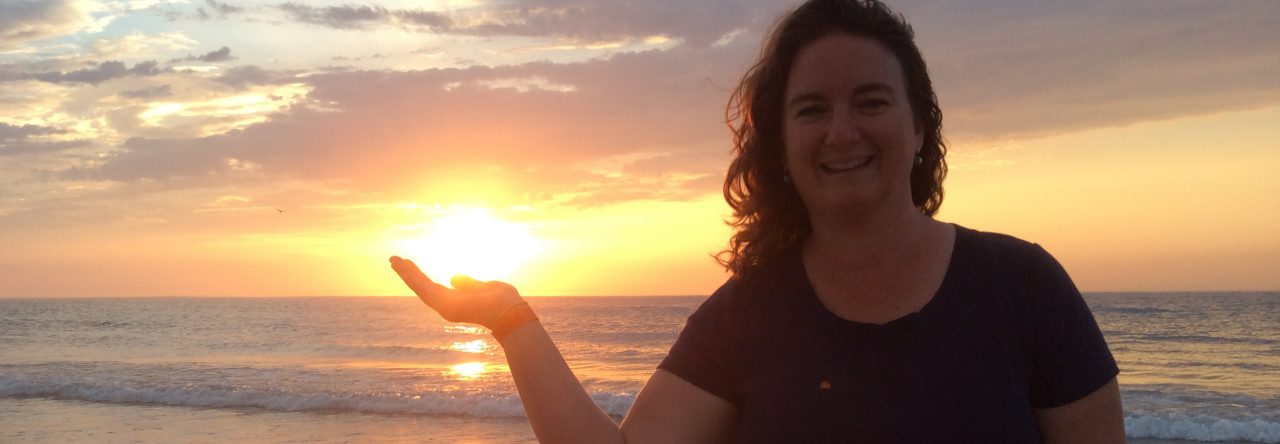Adopting environmentally sustainable practices is a wonderful way to model and teach children about being a good steward of the planet. Slowly adopting new principles and making changes to existing practices will likely be more successful than trying to change too many things all at the same time. Involving the children in your program and their families will help them have ownership of the changes, and hopefully inspires them to make similar changes in their homes.

The “Going Green Checklist” (see below) is not meant to be a judgment about how you conduct your program, but rather as a way to reflect on what you currently do, identify one or two strategies to add, and to think about how you would like your program to be in the future.
Often teachers in larger child care centers or public schools may have little decision making power for large scale changes, but can make powerful small changes in their own classrooms. It is better to think of the grand sum of little changes, than to take on an overwhelmingly large task at first. Build off of the successes, even if it’s just teaching children to take one paper towel instead of five to dry their tiny hands! The slow but steady approach often creates lasting changes in a program because the changes become daily routines.
We can teach our children about caring for the planet through a range of rich opportunities, reading a wide selection of books on the topic throughout the year, and by creating hands on learning experiences about nature and the environment. This is not a one week experience in the month of April when it’s “Earth Day”, but rather a yearlong integrated theme that is woven into the curriculum and daily routines. It is through simple daily practices that we implement in our classroom that we can meaningfully show to both children and families. Through educating our children and modeling green practices, they will grow up knowing how to care for the Earth. It will be their love of the planet that propels them to care for it.

Going Green Checklist
- As plastic toys are replaced, substitute natural materials or toys made from recycled materials
- Books about the environment are in the classroom library
- Children bring reusable water bottle from home
- Communicate with families about environmentally sound practices
- Compost food scraps
- Conservation activities done within the community
- Daily outdoor time in nature
- Discuss current environmental issues with children in an age appropriate way (such as drought, new recycling laws, keeping rivers clean)
- Eco Art projects are part of the program as a way to talk about reusing and re-purposing unwanted materials
- Eliminate paper plates and plastic utensils
- Energy audit is conducted for the program
- Grow plants indoors year-round as way to clean the air & teach children to care for plants
- Growing a green wall to create a living garden in minimal space
- Locally produced materials are used; teach how these materials do not require fuel to be shipped, and supports the local economy
- Lower consumption of energy (lights off when we leave the room; less lights on when sunshine brightens the room)
- Lower consumption of water (encourage quicker hand washing; use a rain barrel to water the outdoor garden)
- Make recycled paper and discuss how paper comes from trees
- Non-toxic “green” cleaning supplies
- Non-toxic furnishings, wall paint, and floor coverings
- One paper towel to dry hands
- Organic local food served as majority of meals and snacks
- Participate in Earth Day; or “Green Up Day” if you are lucky enough to be a Vermonter
- Philosophy of “No such thing as bad weather, just bad clothing”
- Purchase reusable plates, bowls, and utensils for meals & snacks
- Purchases of art supplies in large containers so less waste
- Read about landfills and find out where our trash goes; contrast that to recycling
- Recycling program implemented
- Redemption of bottles is another type of recycling and can be a fundraiser
- Seek input from families and community about ways they see the program could become ‘greener’
- Serve milk from gallon container and eliminate lots of small cartons of trash a day
- Switch to cloth napkins
- Teach about reduce, reuse, and recycle & model those practices in the program
- Teach about trees and ways we can save paper by using both sides of a paper.
- Vegetable garden at school that supplies a portion of the food
- Walking and riding bikes to school instead of using the car
- Waste management
- Worm farm as an indoor composting project
No matter the political climate or negative things happening in the world, helping to connect children to nature will have an immediate impact on them…and will likely help them become better stewards of the Earth in years to come.
*What would you add to the going green checklist? I’d love to hear your ideas!
